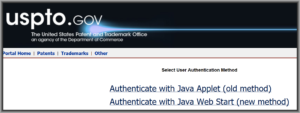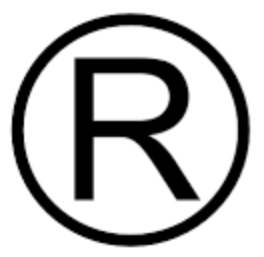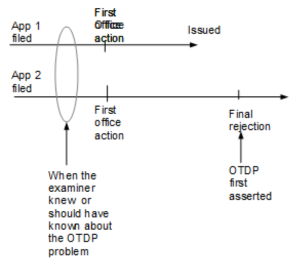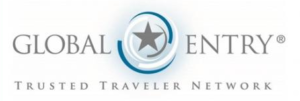 As of a couple of days ago, users now have a choice of two ways to log in at Private PAIR and EFS-Web. The two choices are “Java Applet” and “Java Web Start”. How should one choose which login method to use? In this article I give a bit of background, and then I discuss some of the things that might influence your choice. Continue reading “Picking a way to log in at PAIR/EFS-Web”
As of a couple of days ago, users now have a choice of two ways to log in at Private PAIR and EFS-Web. The two choices are “Java Applet” and “Java Web Start”. How should one choose which login method to use? In this article I give a bit of background, and then I discuss some of the things that might influence your choice. Continue reading “Picking a way to log in at PAIR/EFS-Web”
Picking a new trademark
The other day one of our valued employees at our firm happened to ask me how we picked the name of our publishing arm, Penaya Publishing. In response, I launched into a discussion of the factors that we urge clients to consider when picking a new name for a company or product or service, and the result was that I felt yet another blog article coming on. Here it is, a discussion of factors that we urge a client to consider when picking a new name for a company or product or service. I hope readers will post their comments and suggestions below. Continue reading “Picking a new trademark”
A seminar at John Marshall Law School
Today I finished co-teaching a two-day seminar about the Patent Cooperation Treaty at John Marshall Law School. I had the pleasure for the first time of serving on the dais with Matthias Reischle, Director and Head at WIPO. This program was sponsored by the John Marshall Law School Center for Intellectual Property, Information and Privacy Law (“the Center”).
(Click on the photograph to see a larger copy of the photograph.) From left, Josh Sarnoff of DePaul Law School; Daryl Lim, Director of the Center; Matthias Reischle; yours truly; and Vangelis Economou, director of the JMLS Patent Clinic.
Picking when to hand in a specimen of use?
 I will offer a few thoughts on how a trademark practitioner might pick when (during the prosecution of an ITU trademark application) to hand in the specimen of use. (I will assume the simple case in which a trademark application contains just one trademark class. In such a trademark application, there is generally a need only to hand in one specimen of use.)
I will offer a few thoughts on how a trademark practitioner might pick when (during the prosecution of an ITU trademark application) to hand in the specimen of use. (I will assume the simple case in which a trademark application contains just one trademark class. In such a trademark application, there is generally a need only to hand in one specimen of use.)
The idea of an ITU application is that the applicant is not claiming to have actually used the mark in interstate commerce, but is merely professing to have a bona fide intention to use the mark in commerce at some time in the future.
Continue reading “Picking when to hand in a specimen of use?”
A small bit of Hague housekeeping
Recently a bit of Hague housekeeping happened. Continue reading “A small bit of Hague housekeeping”
Brunei joins Madrid Protocol
Cambodia joins the PCT
Examiners discover a new RCE trick
We’ve become aware of a new trick that Examiners at the USPTO use to force an a pplicant to file an RCE. I hesitated for a while to blog about this, fearing that this blog article would educate any Examiners that did not already know about this trick. But hopefully the powers-that-be at the USPTO will read this blog article and will take appropriate steps to block the trick. And anyway maybe the word had gotten around the Examining Corps about this trick some time ago, and maybe there aren’t any Examiners that don’t already knew about this trick.
pplicant to file an RCE. I hesitated for a while to blog about this, fearing that this blog article would educate any Examiners that did not already know about this trick. But hopefully the powers-that-be at the USPTO will read this blog article and will take appropriate steps to block the trick. And anyway maybe the word had gotten around the Examining Corps about this trick some time ago, and maybe there aren’t any Examiners that don’t already knew about this trick.
Worsening backlogs at some Global Entry interview centers
 Last April I blogged about the unreasonable delays due to backlogs for interview appointments at Global Entry interview centers. Back then, at San Francisco airport, the backlog was five months. Back then, at Portland (Oregon) airport, the backlog was four months. At Denver airport, there was simply no appointment available no matter how long you were willing to wait. The backlog was essentially infinite.
Last April I blogged about the unreasonable delays due to backlogs for interview appointments at Global Entry interview centers. Back then, at San Francisco airport, the backlog was five months. Back then, at Portland (Oregon) airport, the backlog was four months. At Denver airport, there was simply no appointment available no matter how long you were willing to wait. The backlog was essentially infinite.
How are things now, in October of 2016? At San Francisco airport, the backlog has worsened to six months. At Portland airport, the backlog has worsened to seven months. And at Denver airport, the backlog is still infinite. No appointments are available there. I checked Los Angeles International airport – the backlog there is six months. Boston Logan Airport has a backlog of nine months.
The folks in charge of Global Entry need to staff their interview locations appropriately to reduce the backlog.




